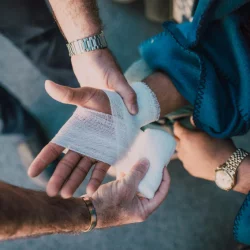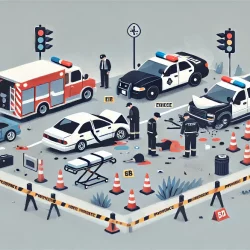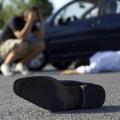Personal Injury Issues: Proving Fault in Slip and Fall Accidents
Slips, trips and falls are all part of everyday life. But, if you have been injured as a result of someone else’s negligence, you may have the grounds for a personal injury claim. In the crux of it all, accidents can happen. But, if this accident could have been avoided, it’s time to start seeking legal advice.
It can be incredibly difficult to decipher who is at fault when it comes to slip and fall accidents. Did you know that thousands of people every year are injured by slip and fall accidents? Often this is a result of negligence on the part of the property owner. Inadequate pavements, wet floors and faulty staircases are often at blame for someone being injured. In some instances, people are left a little sore. But, in other cases the injured party can suffer long term and severe damage.
Preventing Accidents
Of course, an accident is an unforeseen event. But, if your employer or a property owner has been negligent in providing adequate facilities, there may be a case to prove fault. Every property owner has a legal responsibility to make their property or workplace a safe and reasonable space. If they have failed to do so, proving fault should be made easier.
A Property Owner's Duty to Safe Conditions
When it comes to providing a safe environment, each property owner has a duty of care to provide this. However, this is not a general rule. So, if you are seeking damages for an accident that has occurred on someone else’s property, it may be wise to seek legal advice. A helpful attorney in St. Louis will be able to answer your questions. Should this issue be picked up by a lawyer, they will want to know if the property owner has been negligent. They will also investigate if the property owner has been reasonable in protecting others from harm.
Reasonableness is often used by courts to determine whether a case for compensation and damages is successful.
Liability
Should you take this matter to a solicitor or attorney, you will need to provide evidence. This is so that you can attain compensation for the injuries that you have incurred.
This is a matter known as liability. Typically, you will have to prove that the homeowner is liable for the slip and fall accident.
Let’s take a look at some examples of liability:
Dangerous Conditions
If a homeowner has intentionally left their property in a state of disrepair and is subsequently dangerous, you may have a case to win. Reasonably, the property owner should have rectified any issues.
Lack of Knowledge
In some circumstances, a property owner may not be aware of the issues. If they have a lack of knowledge, you may not have a case to work with.
A Grey Issue
Slips and falls are subject to many grey areas. As this issue is often decided by a court, it all comes down to reasonableness. Reasonableness is often determined by a judge. So, do make sure that you have a raft of compelling evidence before you take this matter further. Proving fault in a slip and fall accident can be tough.
More to Read:
Previous Posts:




